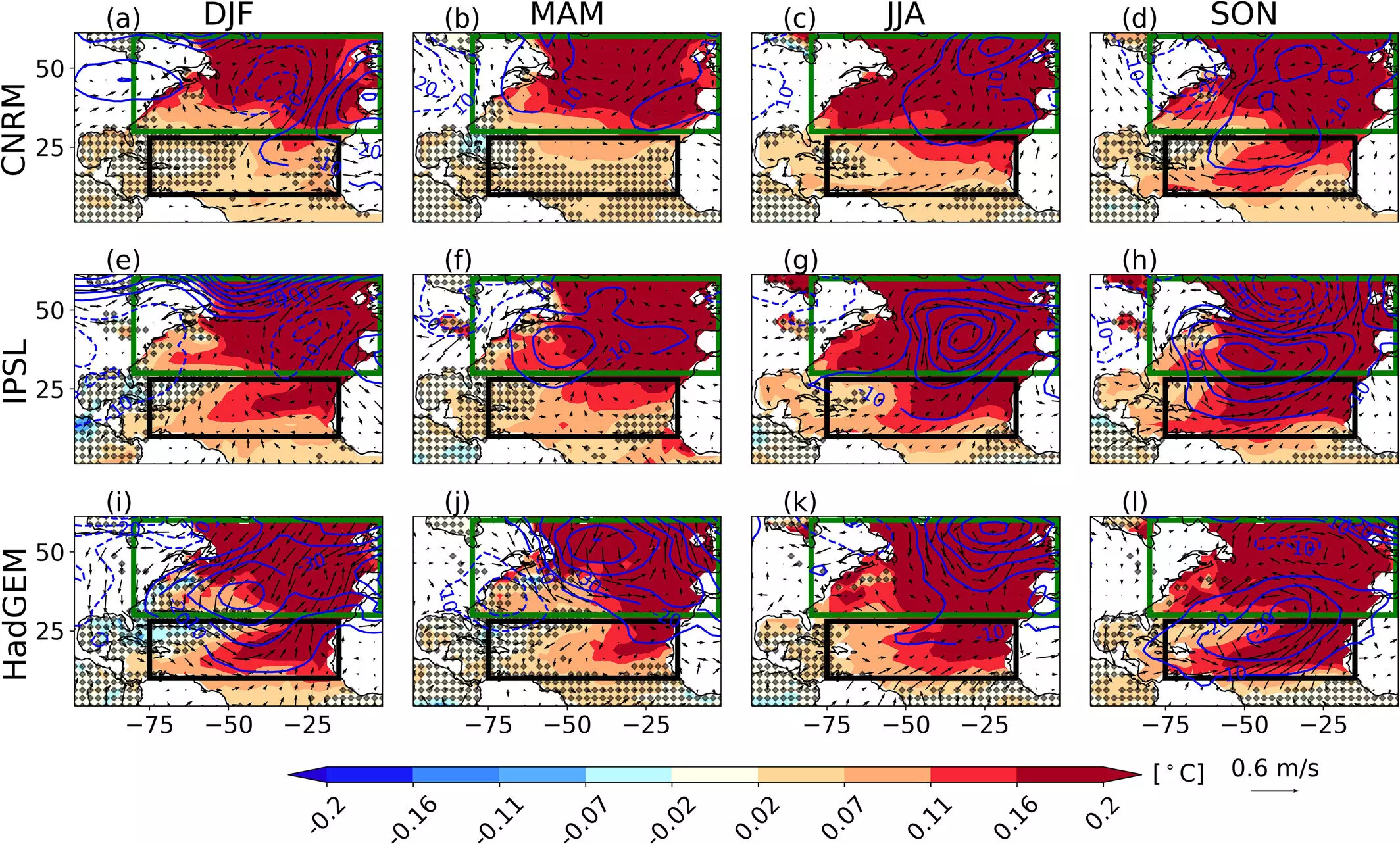Recent research underscores the significant impact of the Atlantic Ocean’s upper layers on global climate patterns. The study, originating from the University of Reading, highlights how the mixed layer—the shallow upper zone of the ocean where surface winds interact with water layers—serves as a primary catalyst for a climate phenomenon called Atlantic Multidecadal Variability (AMV). This phenomenon not only plays a crucial role in regional climates, but its ramifications extend worldwide, particularly affecting weather systems across North America, Europe, and Africa.
Traditionally, scientists attributed variations in climate primarily to ocean-atmosphere heat exchanges. However, this study challenges that conventional wisdom, suggesting that the depth of the ocean’s mixed layer is a more critical factor. Dr. Balaji Senapati, the study’s lead author, argues that recognizing the mixed layer’s role could significantly enhance the accuracy of climate models. By acknowledging the ocean’s complicated interplay with atmospheric conditions, this research provides a fresh perspective on how climate predictions are formulated, potentially altering how researchers approach climate change modeling.
The findings suggest that temperature anomalies in the extratropical North Atlantic can directly influence trade winds. Warmer than average conditions lead to diminished trade wind strength, resulting in a shallower mixed layer, particularly during warmer months. This dynamic allows solar energy to penetrate and heat a thinner layer of water, intensifying warmth in the tropical Atlantic. The process sets off a feedback loop: as northern Atlantic waters warm, trade winds weaken, further limiting the mixed layer’s depth, thus exacerbating the heating effect.
Conversely, during cooler AMV phases, the reverse occurs—temperatures across the Atlantic decline, illustrating the sensitivity of these systems to shifts in oceanic temperatures. These alternating phases of warming and cooling hold critical implications for predicting weather anomalies like hurricanes in the Caribbean and changing rainfall patterns in the Sahel, showcasing the interconnectedness of global climate systems.
The implications of these findings are far-reaching, particularly regarding climate modeling and forecasting. It raises critical questions about the adequacy of existing models that may neglect the complexities associated with upper-ocean dynamics. This research advocates for a more nuanced integration of oceanic processes into climate forecasting methodologies, aiming to improve predictive capabilities for long-term climate trends and their global implications.
As climate change continues to challenge scientists, understanding such natural variability becomes increasingly crucial. Insights from this study could pave the way for more nuanced mitigation strategies, enhancing our capacity to respond to the adverse effects of climate variability on global weather patterns, and ultimately contributing to the broader discussion surrounding climate resilience and sustainability.

